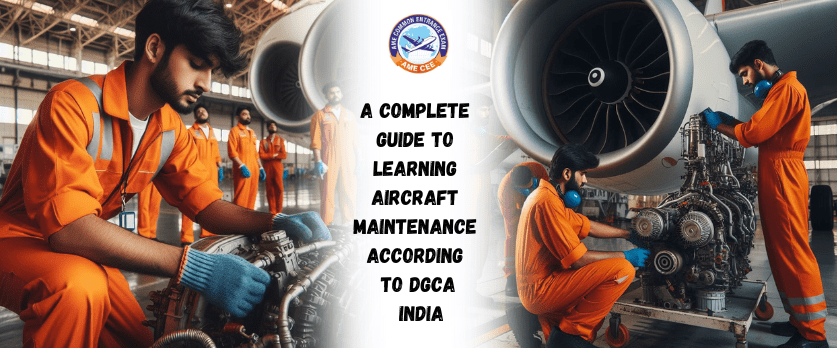The Directorate General of Civil Aviation (DGCA) in India plays a crucial role in regulating and overseeing aviation safety and maintenance standards in the country. For individuals aspiring to learn aircraft maintenance in compliance with DGCA regulations, this guide provides a comprehensive roadmap tailored to the requirements and procedures set forth by DGCA India.
1. Understand DGCA Regulations
Familiarize yourself with the regulations and guidelines outlined by DGCA India pertaining to aircraft maintenance, including CAR 145 (Civil Aviation Requirements – Maintenance) and CAR M (Civil Aviation Requirements – Aircraft Maintenance Personnel Licensing).
Gain an understanding of the regulatory framework governing aircraft maintenance organizations, maintenance procedures, and personnel licensing requirements.
2. Formal Education and Training
Enroll in DGCA-approved aircraft maintenance engineering (AME) schools or training organizations that offer courses compliant with CAR M requirements.
Choose a program accredited by DGCA India that covers theoretical knowledge and practical training in airframe, powerplant, and avionics systems.
Ensure that the curriculum meets the minimum instructional hours and syllabus prescribed by DGCA for obtaining an Aircraft Maintenance Engineering License.
3. Obtain Aircraft Maintenance Engineering License (AMEL)
Fulfill the eligibility criteria specified by DGCA India, which typically include educational qualifications, age limits, and medical fitness standards.
Successfully complete the prescribed training program and accumulate the required practical experience hours as per DGCA regulations.
Clear the written and oral examinations conducted by DGCA to obtain the Aircraft Maintenance Engineering License in the relevant categories, such as airframe, powerplant, or avionics.
4. Gain Practical Experience
Seek opportunities for apprenticeships, internships, or on-the-job training at DGCA-approved maintenance organizations, airlines, or aviation companies.
Acquire hands-on experience in aircraft maintenance tasks under the supervision of licensed aircraft maintenance engineers.
Document and log practical training hours in accordance with DGCA requirements to fulfill the experience criteria for license issuance.
5. Stay Updated with DGCA Circulars and Notifications
Regularly monitor DGCA circulars, notifications, and updates related to aircraft maintenance regulations, procedures, and safety directives.
Comply with any changes or amendments introduced by DGCA India to ensure adherence to the latest standards and practices in aircraft maintenance.
6. Maintain Continuing Education and Professional Development
Pursue recurrent training and refresher courses to stay abreast of technological advancements, maintenance practices, and regulatory changes mandated by DGCA India.
Participate in workshops, seminars, and industry conferences to enhance your knowledge, skills, and networking opportunities within the aviation maintenance community.
Conclusion
By following this comprehensive guide aligned with DGCA India regulations, aspiring aircraft maintenance professionals can navigate the educational, training, and licensing requirements effectively. Adhering to DGCA standards ensures competency, compliance, and commitment to safety in the field of aircraft maintenance, contributing to the integrity and reliability of the Indian aviation industry.
To become an aircraft maintenance engineer you may could join AME engineering through AME COMMON ENTRANCE EXAM (AME CEE) this examination you may join AME engineering approved by DGCA, EASA or UGC.


